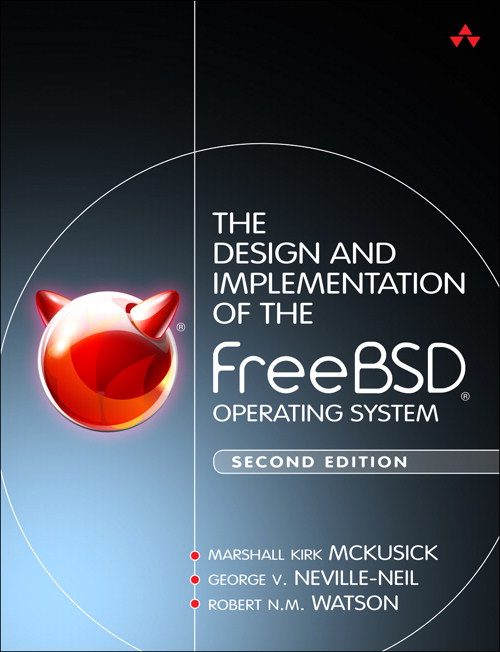
Now available: The Design and Implementation of the FreeBSD Operating System (Second Edition)
[ source navigation ] [ diff markup ] [ identifier search ] [ freetext search ] [ file search ] [ list types ] [ track identifier ]
FreeBSD/Linux Kernel Cross Reference
sys/Documentation/sched-domains.txt
Version:
- FREEBSD - FREEBSD-13-STABLE - FREEBSD-13-0 - FREEBSD-12-STABLE - FREEBSD-12-0 - FREEBSD-11-STABLE - FREEBSD-11-0 - FREEBSD-10-STABLE - FREEBSD-10-0 - FREEBSD-9-STABLE - FREEBSD-9-0 - FREEBSD-8-STABLE - FREEBSD-8-0 - FREEBSD-7-STABLE - FREEBSD-7-0 - FREEBSD-6-STABLE - FREEBSD-6-0 - FREEBSD-5-STABLE - FREEBSD-5-0 - FREEBSD-4-STABLE - FREEBSD-3-STABLE - FREEBSD22 - l41 - OPENBSD - linux-2.6 - MK84 - PLAN9 - xnu-8792
SearchContext: - none - 3 - 10
SearchContext: - none - 3 - 10
1 Each CPU has a "base" scheduling domain (struct sched_domain). These are 2 accessed via cpu_sched_domain(i) and this_sched_domain() macros. The domain 3 hierarchy is built from these base domains via the ->parent pointer. ->parent 4 MUST be NULL terminated, and domain structures should be per-CPU as they 5 are locklessly updated. 6 7 Each scheduling domain spans a number of CPUs (stored in the ->span field). 8 A domain's span MUST be a superset of it child's span (this restriction could 9 be relaxed if the need arises), and a base domain for CPU i MUST span at least 10 i. The top domain for each CPU will generally span all CPUs in the system 11 although strictly it doesn't have to, but this could lead to a case where some 12 CPUs will never be given tasks to run unless the CPUs allowed mask is 13 explicitly set. A sched domain's span means "balance process load among these 14 CPUs". 15 16 Each scheduling domain must have one or more CPU groups (struct sched_group) 17 which are organised as a circular one way linked list from the ->groups 18 pointer. The union of cpumasks of these groups MUST be the same as the 19 domain's span. The intersection of cpumasks from any two of these groups 20 MUST be the empty set. The group pointed to by the ->groups pointer MUST 21 contain the CPU to which the domain belongs. Groups may be shared among 22 CPUs as they contain read only data after they have been set up. 23 24 Balancing within a sched domain occurs between groups. That is, each group 25 is treated as one entity. The load of a group is defined as the sum of the 26 load of each of its member CPUs, and only when the load of a group becomes 27 out of balance are tasks moved between groups. 28 29 In kernel/sched.c, rebalance_tick is run periodically on each CPU. This 30 function takes its CPU's base sched domain and checks to see if has reached 31 its rebalance interval. If so, then it will run load_balance on that domain. 32 rebalance_tick then checks the parent sched_domain (if it exists), and the 33 parent of the parent and so forth. 34 35 *** Implementing sched domains *** 36 The "base" domain will "span" the first level of the hierarchy. In the case 37 of SMT, you'll span all siblings of the physical CPU, with each group being 38 a single virtual CPU. 39 40 In SMP, the parent of the base domain will span all physical CPUs in the 41 node. Each group being a single physical CPU. Then with NUMA, the parent 42 of the SMP domain will span the entire machine, with each group having the 43 cpumask of a node. Or, you could do multi-level NUMA or Opteron, for example, 44 might have just one domain covering its one NUMA level. 45 46 The implementor should read comments in include/linux/sched.h: 47 struct sched_domain fields, SD_FLAG_*, SD_*_INIT to get an idea of 48 the specifics and what to tune. 49 50 For SMT, the architecture must define CONFIG_SCHED_SMT and provide a 51 cpumask_t cpu_sibling_map[NR_CPUS], where cpu_sibling_map[i] is the mask of 52 all "i"'s siblings as well as "i" itself. 53 54 Architectures may retain the regular override the default SD_*_INIT flags 55 while using the generic domain builder in kernel/sched.c if they wish to 56 retain the traditional SMT->SMP->NUMA topology (or some subset of that). This 57 can be done by #define'ing ARCH_HASH_SCHED_TUNE. 58 59 Alternatively, the architecture may completely override the generic domain 60 builder by #define'ing ARCH_HASH_SCHED_DOMAIN, and exporting your 61 arch_init_sched_domains function. This function will attach domains to all 62 CPUs using cpu_attach_domain. 63 64 Implementors should change the line 65 #undef SCHED_DOMAIN_DEBUG 66 to 67 #define SCHED_DOMAIN_DEBUG 68 in kernel/sched.c as this enables an error checking parse of the sched domains 69 which should catch most possible errors (described above). It also prints out 70 the domain structure in a visual format.
Cache object: 166e332d74ccdedb37f3a54804c05871
[ source navigation ] [ diff markup ] [ identifier search ] [ freetext search ] [ file search ] [ list types ] [ track identifier ]